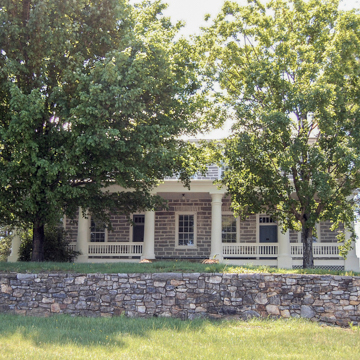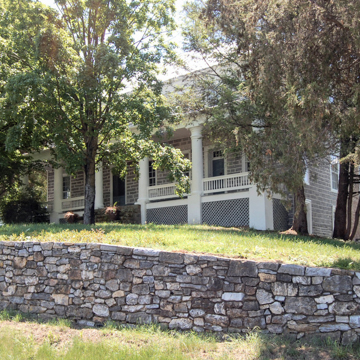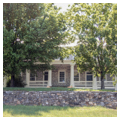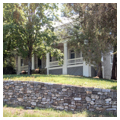John Miller began producing iron for local blacksmiths in 1760. His son Henry took over the ironworks in 1774, and as Mossy Creek Iron Works it became one of the major industries in the region, producing pig iron and such finished pieces as cannonballs and household utensils. It closed after the Civil War. The two-story stone house was built in two stages—the four-bay double-pile section on the left and the later three-bay single-pile addition on the right. The two sections are united by a hipped roof and a classical porch across the facade. A brick rear ell was added later. This property retains several early-nineteenth-century stone outbuildings and a frame bank barn.
You are here
Henry Miller House
If SAH Archipedia has been useful to you, please consider supporting it.
SAH Archipedia tells the story of the United States through its buildings, landscapes, and cities. This freely available resource empowers the public with authoritative knowledge that deepens their understanding and appreciation of the built environment. But the Society of Architectural Historians, which created SAH Archipedia with University of Virginia Press, needs your support to maintain the high-caliber research, writing, photography, cartography, editing, design, and programming that make SAH Archipedia a trusted online resource available to all who value the history of place, heritage tourism, and learning.

















